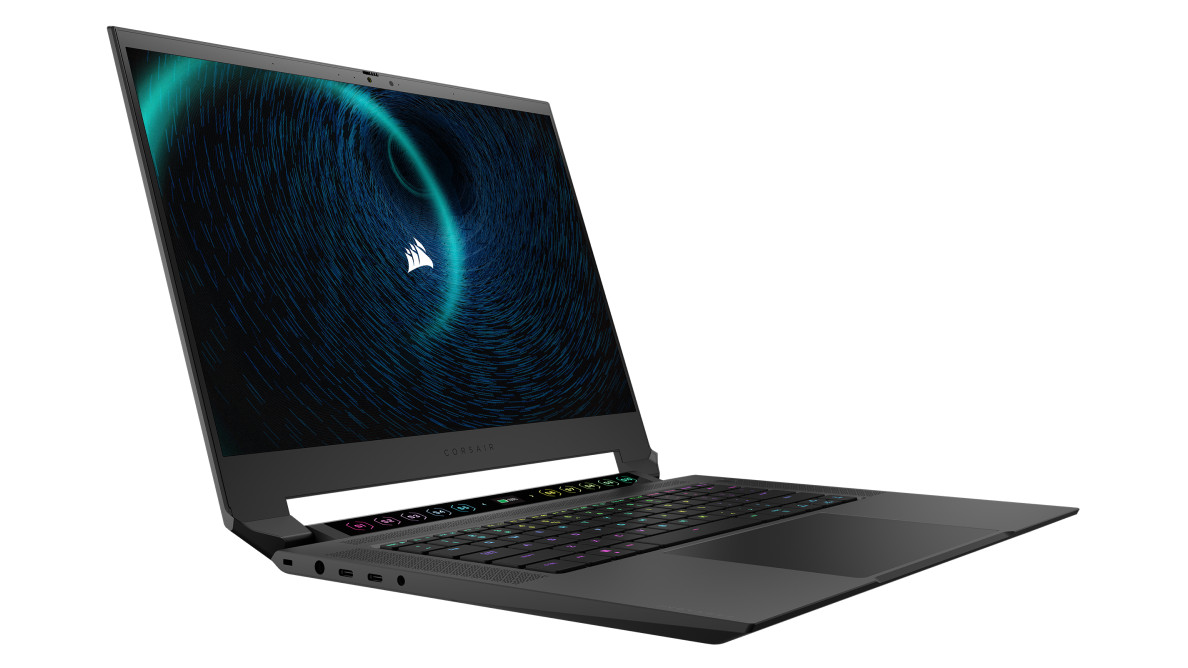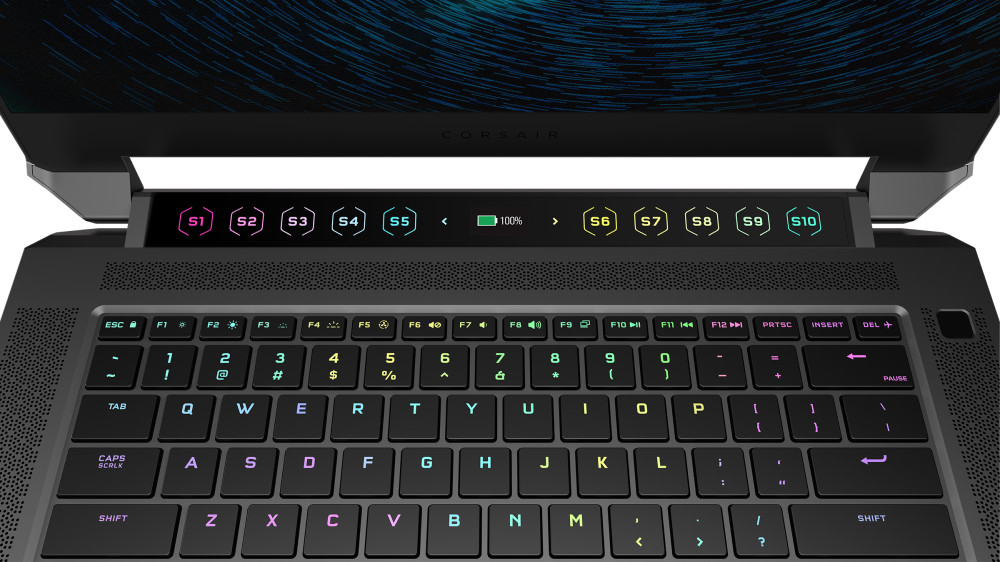Corsair’s first gaming laptop is powerful, thin, and comes with a surprise up its sleeve
Streamers get a dedicated touch panel for Elgato Stream Deck software

Corsair has announced a new gaming laptop over at Computex, marking the first time that the hardware maker has dipped its toes in notebook waters.
Corsair’s Voyager a1600 AMD Advantage Edition runs with all-Team Red hardware as you might expect given the name, utilizing Ryzen 6000 mobile CPUs in combination with Radeon RX 6800M graphics.
Aimed at gamers, along with streamers and content creators, there are two models of the Voyager a1600, the more affordable one running with an AMD Ryzen 7 6800HS processor, 32GB of Corsair DDR5 system RAM, and a 1TB PCIe 4.0 NVMe SSD.
The difference with the higher-tier model is that it ups the CPU to a Ryzen 9 6900HS, and the RAM loadout to 64GB, with a 2TB PCIe SSD. Otherwise, these Voyager models are the same, and both are equipped with an AMD Radeon RX 6800M GPU, along with a 16-inch IPS screen that offers a resolution of 2,560 x 1,600 (and a 240Hz refresh rate, with AMD FreeSync on-board).
As an all-AMD machine, you get the benefit of several of Team Red’s synergistic technologies like SmartShift MAX (to intelligently redistribute power between the CPU and GPU as needed), and Smart Access Memory (or SAM, which boosts frame rates by allowing the processor full access to GPU memory – it’s AMD’s take on Resizable Bar, basically).
Corsair is also underlining the effectiveness of the cooling system used in the Voyager, which is an advanced spin on a vapor chamber design, apparently a key factor in keeping temps down while allowing the laptop to be thin – the Voyager is a hair under 20mm.

There’s also a focus on cool stuff for streamers, with Elgato (an outfit that specializes in streaming and capture tech, and is owned by Corsair) providing its Stream Deck software, tied in with 10 customizable shortcut buttons in a touch panel above the keyboard to allow streamers to easily invoke whatever they need with a single tap. You also get a 1080p ‘streaming grade’ webcam and directional 4-mic array.
Get daily insight, inspiration and deals in your inbox
Sign up for breaking news, reviews, opinion, top tech deals, and more.
You’d expect a gaming keyboard, and you’ll get one: a full-size affair with Cherry MX Ultra-Low Profile mechanical switches and RGB backlighting. Also worth noting is that there’s a gap at the bottom of the laptop lid that means the touch buttons are still showing even if the notebook is closed (and this gives the Voyager something of a different aesthetic, too).
We don’t know when the Corsair Voyager a1600 will hit the shelves yet, but we do know how much the two different models will retail at in the US: $2,700 (around £2,150, AU$3,800) and $3,000 (around £2,400, AU$4,200) for the Ryzen 7 and Ryzen 9-powered versions respectively.
Analysis: Something a bit different – but a somewhat niche proposition
It’s interesting to see Corsair’s debut in the gaming laptop world, capitalizing on that AMD synergy with the likes of SAM – and maybe even AMD’s smart storage tech, as was previously rumored, but that wasn’t mentioned at this launch – and doing something different for streamers.
Certainly, there’s a neat extra in terms of the software for streamers and integrated touch panel (which also sports a central display that can, for example, show your remaining battery charge). Of course, most streamers will prefer to do their job at a desk, and therefore with a desktop PC you’d imagine, but still – there’s nothing wrong with alternative options on the table (or on the lap, perhaps – or maybe not).
The Voyager isn’t a cheap laptop, but it packs a good amount of power into what is a pretty thin and relatively light (2.4kg) gaming notebook, with some interesting new ideas. How much appeal the ‘mobile streaming’ angle will have, well, we’ll just have to see…
This year, Computex is once again virtual, but we'll still be bringing you all the breaking computing news and launches as they happen, so make sure you check out all of TechRadar's Computex 2022 coverage.
Darren is a freelancer writing news and features for TechRadar (and occasionally T3) across a broad range of computing topics including CPUs, GPUs, various other hardware, VPNs, antivirus and more. He has written about tech for the best part of three decades, and writes books in his spare time (his debut novel - 'I Know What You Did Last Supper' - was published by Hachette UK in 2013).